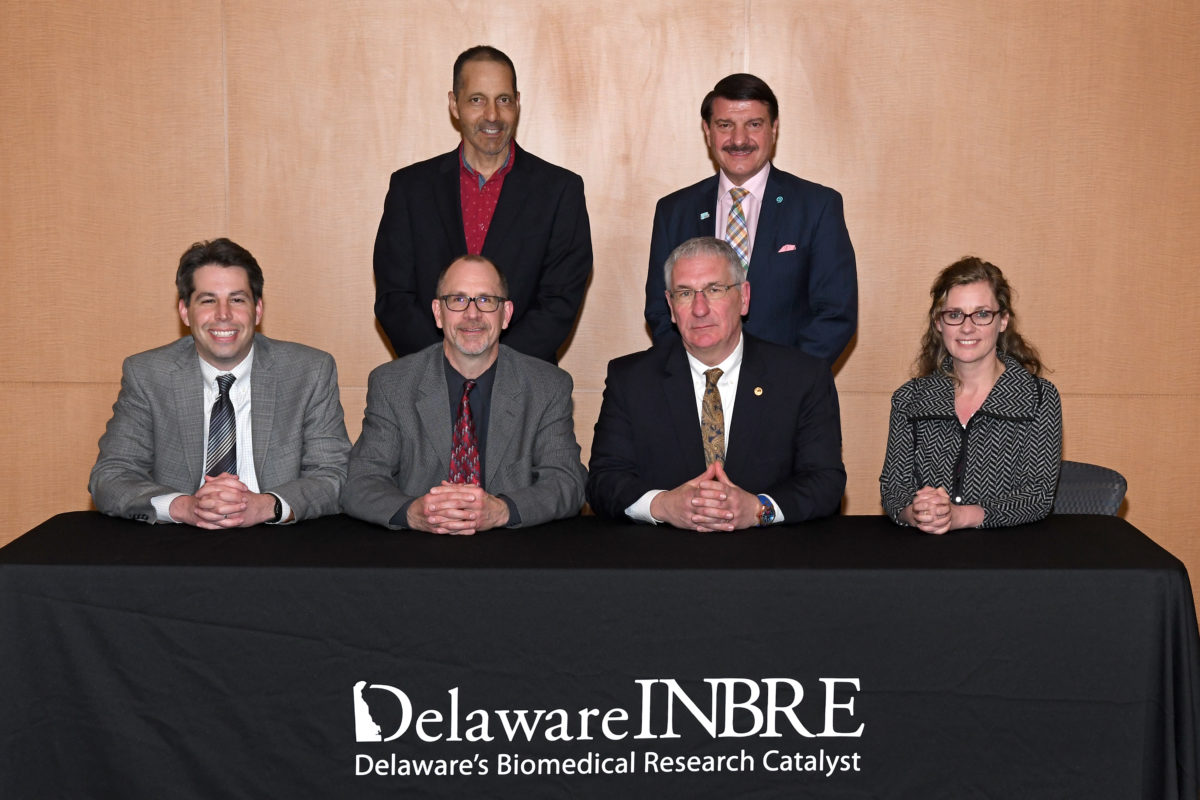Christiana Care is launching an ambitious Delaware health initiative to reduce the prevalence, morbidity and mortality of lung cancer, which exacts an enormous toll on families.
“Lung cancer is a devastating disease and it takes more lives than the next three leading cancers combined,” said Scott D. Siegel, Ph.D., MHCDS, licensed psychologist and director of Population Health Psychology, Value Institute, who is one of the leaders of this effort.
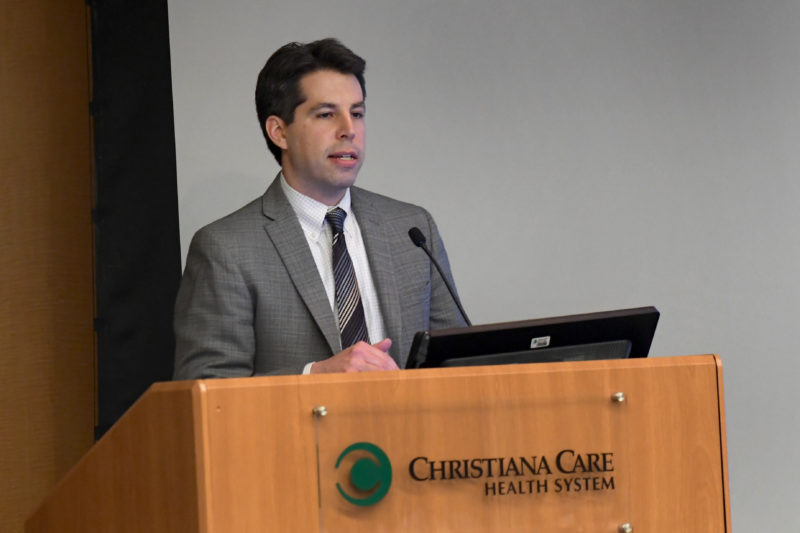
“As a result, we are forming partnerships with researchers, clinicians, community stakeholders and public policy makers to tackle lung cancer through strategic approaches that give special emphasis to tobacco control, cancer screening and gene editing.”
The kick-off event for this comprehensive initiative was a well-attended Inaugural Lung Cancer Symposium, held April 16 at the John H. Ammon Medical Education Center. Presenters shared the latest treatments for lung cancer, as well as the epidemiology of the disease, data on prevention and research on screening, along with the history of tobacco sales and information on the importance of smoking cessation, and the targeted sale of cigarettes to minority communities.
“In taking an integrated and sustainable approach towards lung cancer, Christiana Care will need the help of many in this room and leaders throughout the state,” said Eric Kmiec, Ph.D., director of the Gene Editing Institute, Christiana Care.
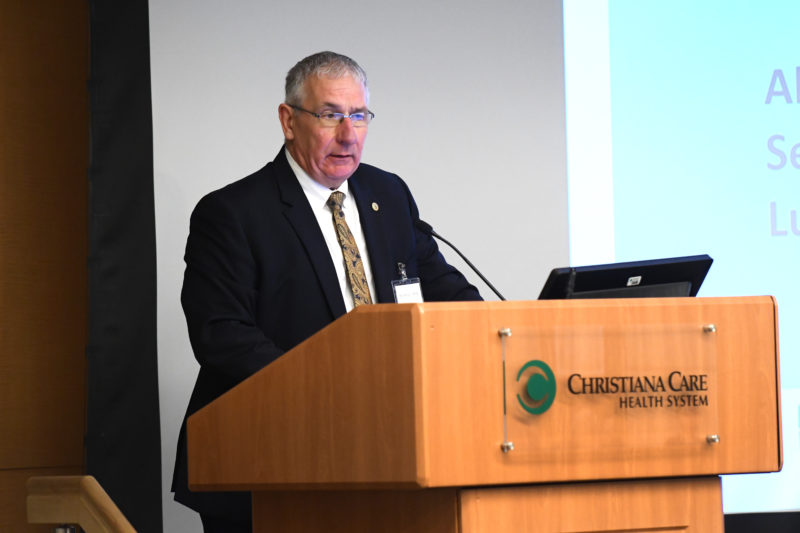
Among those already supporting the symposium and the proposal to harness innovative approaches to lung cancer are the U.S. National Institutes of Health, the Helen F. Graham Cancer Center & Research Institute, and the Delaware IDeA Network of Biomedical Research Excellence (INBRE), which is an effort to strengthen basic and translational biomedical research capability in Delaware.
“Every two and a half minutes in the United States, someone is diagnosed with lung cancer, but this disease has not been on enough people’s radar,” said Albert A. Rizzo, M.D., FACP, FACCP, chief of Pulmonary and Critical Care Medicine, Christiana Care, and key medical adviser for the American Lung Association. “The American Lung Association is enthusiastically on board with this effort, as we know that the best way forward is through collaboration.”
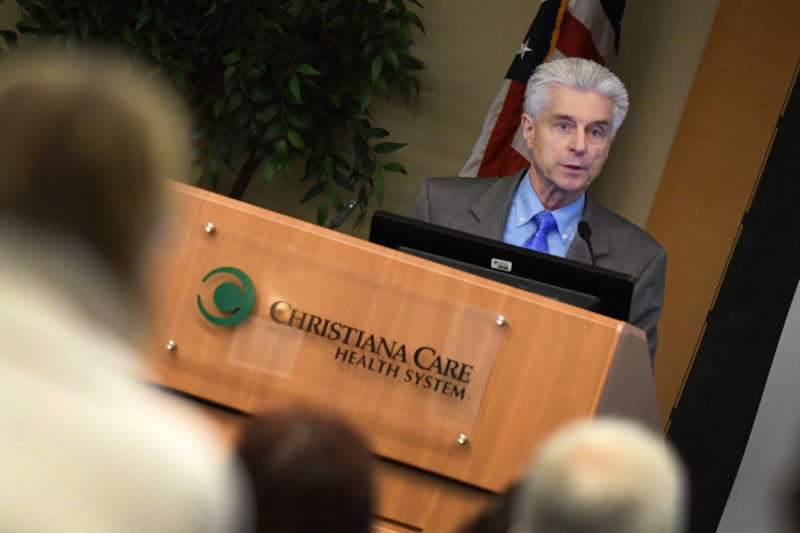
Early detection is key
The lung cancer initiative is similar to Christiana Care’s decade-long collaboration with the Delaware Cancer Consortium to raise awareness around colorectal cancer, a statewide effort that was successful in reducing deaths while increasing colorectal screenings and erasing disparities in treatment. But in some ways lung cancer is more of a challenge, in that the disease is hard to identify in its early stages, which is why lung cancer remains the leading cause of cancer death in the world.
In fact, the five-year survival rate for lung cancer patients in the United States is less than 20 percent – a statistic that has not changed significantly in decades, according to the National Institutes of Health.
The initiative is a good fit for the Christiana Care, which is focused on innovation for optimal health, said Nicholas J. Petrelli, M.D., FACS, Bank of America endowed medical director, Helen F. Graham Cancer Center & Research Institute. In Delaware, the incidence of lung cancer per 100,000 people is 71.4, which is higher than the United States as a whole, at 57.3 per 100,000, said Dr. Petrelli.
One area for improvement is screening. Recent data shows that low-dose CT scans are the most reliable way of identifying lung cancer early. But most Delawareans are not aware of the guidelines for requesting a CT scan.
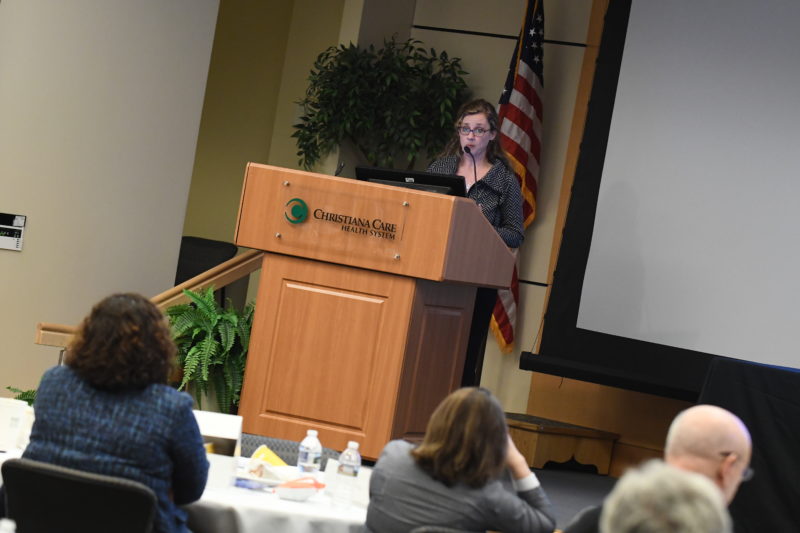
“We have about 32,000 people in Delaware who are probably eligible for lung cancer screenings, and we only are screening about 6 percent of the people who should be screened. Delaware can do better,” said Heather Bittner Fagan, M.D., MPH, FAAFP, a family physician and researcher who works in primary care and the community to improve cancer screening.
Dr. Rizzo agrees. “If we can improve when we find cancer – moving it from a stage 4 disease to stage 1 – we can significantly improve survival,” he said. “Early detection is an important way to fight this cancer.”
Cancer treatment overview
In giving an overview of lung cancer treatments, Gregory A. Masters, M.D., principal investigator with the U.S. National Cancer Institute Community Oncology Research Program at the Graham Cancer Center, said in the past several years the understanding of lung cancer has become more detailed and nuanced.
And as lung cancer is better defined, there are more clinical trials available for patients and new ways to approach treatment, including the targeting of gene mutations.
“Part of the ongoing effort is to put together the best clinical trials to learn more about what we are dealing with, as we help our patients,” said Dr. Masters.
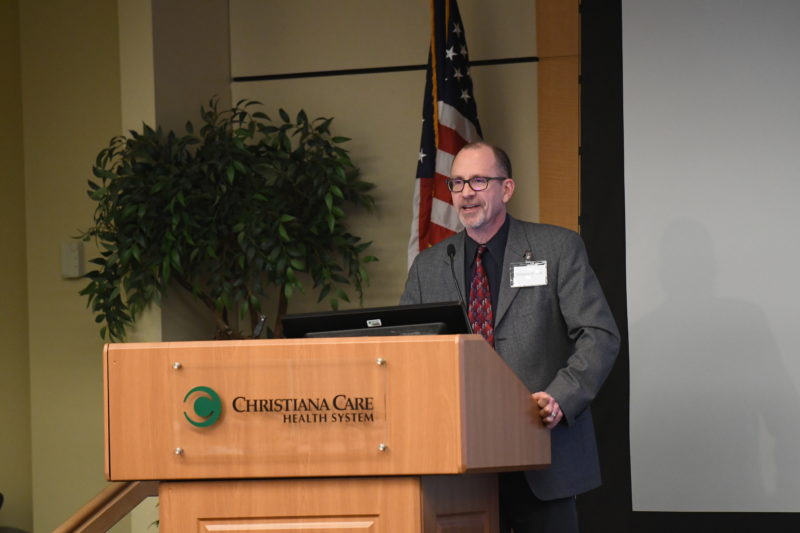
A targeted therapy involving epidermal growth factor receptor (EGFR) is promising, said Dr. Masters. In a well-functioning cell, EGFR allows cells to properly grow and divide. But in patients with non-small-cell lung cancer there can be mutations to EGFR. Targeted therapy can interfere with EGFR and prevent tumors from growing.
Dr. Kmiec also explained that gene editing with CRISPR/CAS9 may have a role in the treatment of lung cancer as an augmented therapy and may be particularly useful in the removal of the NRF2 transcription factor in cancer cells. When NRF2 is in hyper-activation the genetic pathway favors the survival of malignant cells, blocking the efficacy of cancer therapies such as chemotherapy or radiation. “We are targeting NRF2 with gene editing so these therapies can be more effective,” said Dr. Kmiec.
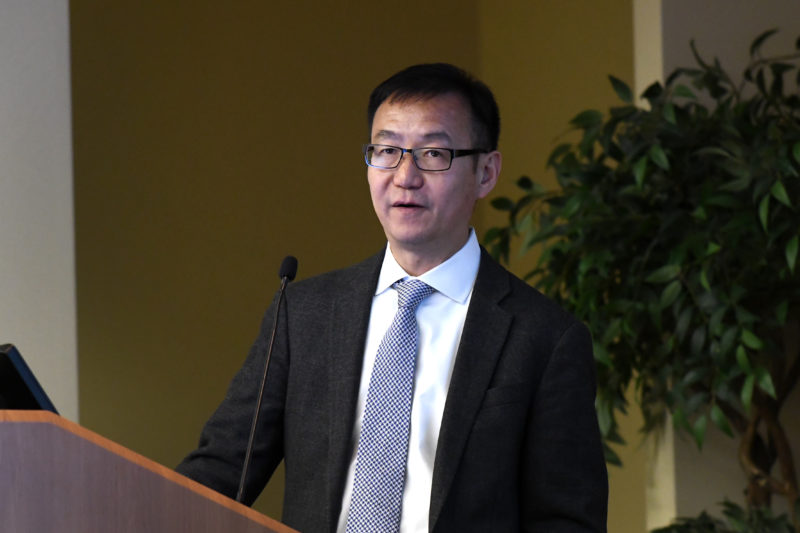
One of the symposium keynote speakers, Bo Lu, M.D., Ph.D., radiation oncologist, who leads the radiation oncology group’s Lung Cancer Translation Research Program at the Kimmel Cancer Center at Thomas Jefferson University, explained that there is a great deal of hope for the field of immunotherapy, with significant research taking place. Immunotherapy is an alternative to traditional chemotherapy and helps expose cancer cells that would otherwise send signals that they are normal cells.
By exposing cancer cells as invaders, immunotherapy drugs trigger a response to re-educate and re-activate a suppressed immune system so it can effectively eliminate cancer. In addition, immunotherapy drugs are usually safe, easy-to-deliver and well-tolerated. And immunotherapy holds much promise when used in combination with other cancer therapies.
“Patients under this therapy are likely to live longer and healthier lives if they respond to the treatments, because the cancer will be under the long-term control of the body’s immune system,” said Dr. Lu.
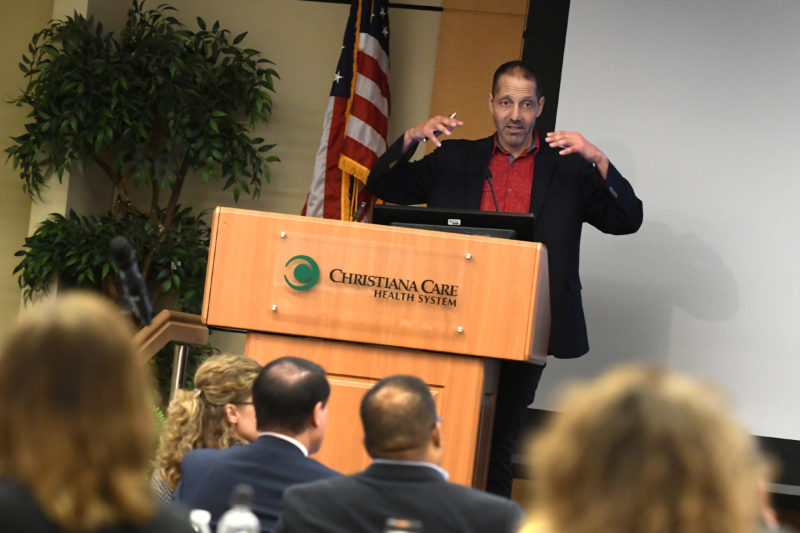
Extinguishing smoking behavior
Both smokers and non-smokers are diagnosed with lung cancer, but smoking remains the leading cause of the disease. Still, smoking has not always been a significant public health issue.
In the early 20th century smoking was rare, though there was a rapid increase in smoking that peaked in the early 1960s, said Dr. Siegel. There was an increase because cigarettes could be mass-produced at an inexpensive price, and they were sold with sophisticated marketing during a time of government endorsement and social approval.
Since the 1964 publication of the U.S. Surgeon General’s report on “Smoking and Health,” showing the link between smoking and disease, smoking has been on the decline, but 15 percent of the public – 40 million Americans – continue to smoke.
Keynote speaker Daniel Rodriguez, Ph.D., professor of public health at La Salle University, said further research is needed on what smoking means to the self-esteem and identity of individuals who continue to smoke. At the very least, he said, they need greater social support. Each year 66 percent of smokers attempt to quit, but only 5 percent remain successful three months after they have tried.
He said many factors play a role in smoking as a public health issue, including nicotine dependence, stress, mental illness, weak social support for quitting and low self-efficacy beliefs. There is also data that shows a disproportionate number of tobacco outlets in poor and minority neighborhoods, a factor in the high rates of smoking among people of low socio-economic status.
In addition, young people continue to take up smoking. And if American teenagers continue smoking at the current rate, 5.6 million of these young people are expected to die prematurely from a smoking-related illness, according to the U.S. Centers for Disease Control and Prevention.
Given these statistics, Dr. Siegel hopes the lung cancer initiative will include education to prevent smoking, community-based interventions, government policies and smoking cessation efforts. “The end game for smoking is within sight but if we do nothing further we won’t get there,” he said. “That’s why we need to continue to innovate, not only in treatment, but in terms of prevention and tobacco control.”
